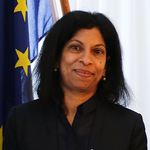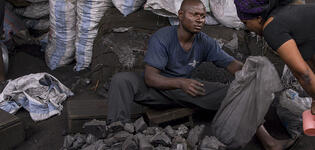Blog
The Nordic Model — lessons for Sri Lanka
Sri Lanka, like the Nordic countries, is a social democratic nation with a strong welfare state. It is classified as a ‘high human development’ country by the United Nations, with a human development index above the average of 0.76 for countries in the same income classification. Large social expenditures — government spending is approximately 19.2% of GDP — have contributed to these high levels of human development, but Sri Lanka has not yet capitalized on this to achieve sustained economic growth.
The Nordic nations demonstrate that both equity and growth are possible through a successful combination of openness and the welfare state. While exogenous factors, such as endowments, have no doubt contributed to the success of the Nordic nations — for Norway in particular — a crucial complementing factor has been strong institutions and good policy. So, what can Sri Lanka learn from the Nordics?
The importance of strong institutions
Institutions in the Nordic region are characterized by a strong rule of law, judicial effectiveness, government integrity, low levels of corruption, and well-defined property rights. Economic policies encourage trade openness, investment in human capital, technology, innovation, and entrepreneurship. Social policies constitute a large proportion of government spending which accounts (as a % of GDP) for 57% in Denmark, 54.4% in Finland, 43.2% in Iceland, 49.8% in Norway, and 49% in Sweden.
Despite high tax rates, the strong association between tax payments and government benefits has led to high labour force participation rates (LFPRs), including very high female LFPRs. These participation rates are what make the welfare state sustainable. Nordic labour market institutions feature high unionization rates, wage compression through coordinated wage bargaining, active labour market policies, and generous unemployment benefits, all indicative of collective risk sharing. The resulting security provided to citizens has led to high levels of social and institutional trust.
All these factors increase the security of citizens, strengthen institutions, and reduce the risks associated with economic transactions. Similarly, when property is protected, citizens are more willing to undertake investment, innovation, and entrepreneurship.
Comparison of selected indicators for Sri Lanka and the Nordics:
| Judicial Effectivenessa (0 – 100) | Government Integrity Indexb (0 – 100) | Property Rightsc (0 – 100) | Control of Corruption Indexd (0 – 100) | Rule of Law Indexe (0 –100) | |
|---|---|---|---|---|---|
| Norway | 82.8 | 95.6 | 84.3 | 97.1 | 99.5 |
| Sweden | 79.9 | 91.4 | 88.8 | 98.6 | 98.6 |
| Denmark | 84.6 | 93.0 | 86.3 | 97.6 | 98.1 |
| Iceland | 63.2 | 90.3 | 87.8 | 92.8 | 95.2 |
| Finland | 80.5 | 96.1 | 92.3 | 99.0 | 100 |
| Sri Lanka | 39.2 | 34.7 | 47.7 | 44.7 | 53.9 |
Source: (a), (b), (c) Miller T, Kim A and Roberts J (2020) 2020 Index of Economic Freedom, The Heritage Foundation. (d) and (e) Daniel Kaufmann, Aart Kraay and Massimo Mastruzzi (2010). ‘The Worldwide Governance Indicators: A Summary of Methodology, Data and Analytical Issues’. World Bank Policy Research Working Paper No. 5430.
Increasing the transparency and accountability of public bodies, establishing oversight committees, and other capacities for monitoring institutions, and making institutions more inclusive are some ways in which Sri Lankan institutions may be strengthened in the near term. Sri Lanka has already taken some measures to increase the transparency and accountability of public bodies by, for example, setting up oversight committees and enacting the Right to Information Act of 2016. It will also be important to set up complementary mechanisms, such as technological and physical infrastructure, to increase the accessibility of information and train public officials on data collection and reporting processes.
The complementarity of good policy
Nordic success also highlights the significance of effective, progressive, and consistent policy. Effective and predictable policies promote growth and increase LFPRs, real wages, and productivity. In the Nordics, progressive childcare policies, paid parental leave, flexible working arrangements, and shorter working hours contribute to both high productivity and LFPRs in the region (Denmark 79.4%, Finland 78%, Iceland 87.3%, Norway 78%, Sweden 82.9%).
Gender pay gaps and gender differentials in labour force participation in the Nordic region are among the lowest in the world. By comparison, Sri Lanka’s LFPR is 51.9% and its female LFPR is only 35%. Sri Lanka can draw on the experience of Nordic countries to introduce social policies that support overall labour force participation and, particularly, greater female LFPRs. All this will help to increase social trust, job security, LFPRs, and productivity.
The Nordic countries also show that high tax rates can encourage labour force participation, innovation, and entrepreneurship when revenue is used to create safety nets for individuals and businesses. Taxes in these nations — the tax burden is between 37.7% and 46% of GDP — support both social contributions and investment, R&D, and innovation. Citizens are generally happy to pay high taxes due to the high degree of trust they have in their governments to deliver security and growth.
Sri Lanka’s tax burden as % of GDP is 12.6%. The low revenue-to-GDP ratio has meant that Sri Lanka faces difficulties in increasing social investments. A large proportion of government revenue is generated through indirect taxes instead, which are more regressive. Higher levels of social and institutional trust increase the willingness of citizens and businesses to pay higher taxes which can make the welfare state more sustainable and encourage greater investments in economic growth.
While Sri Lanka has made significant progress in strengthening policy and institutions, there is scope for further improvement. The success of the Nordic countries shows that trust in government and institutions is a bellwether of better outcomes for all.
The views expressed in this piece are those of the author(s), and do not necessarily reflect the views of the Institute or the United Nations University, nor the programme/project donors.
 Join the network
Join the network




